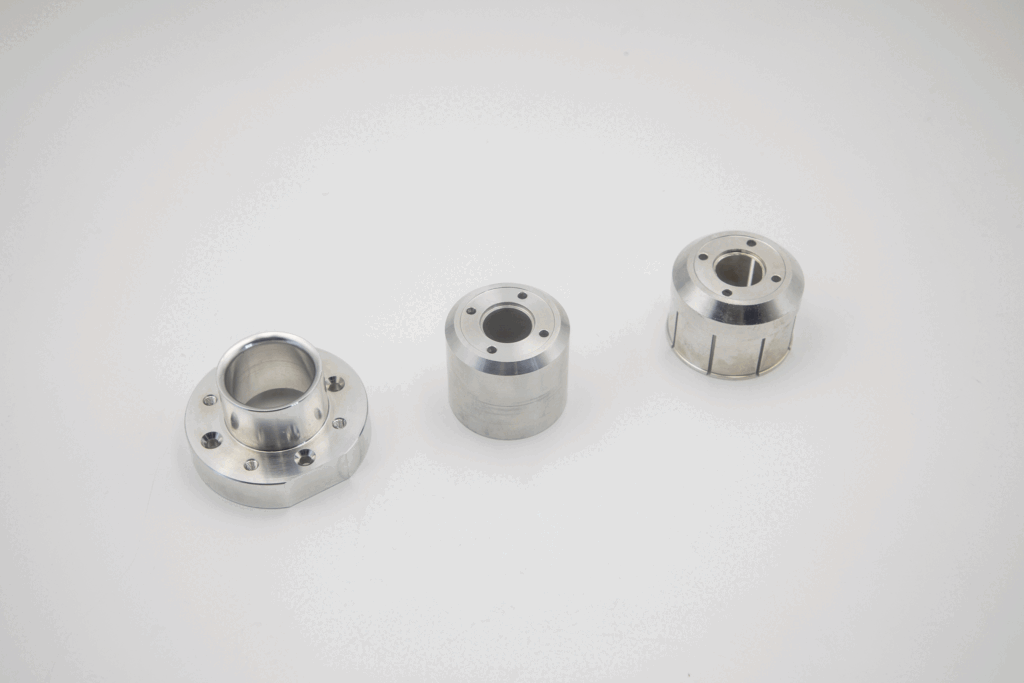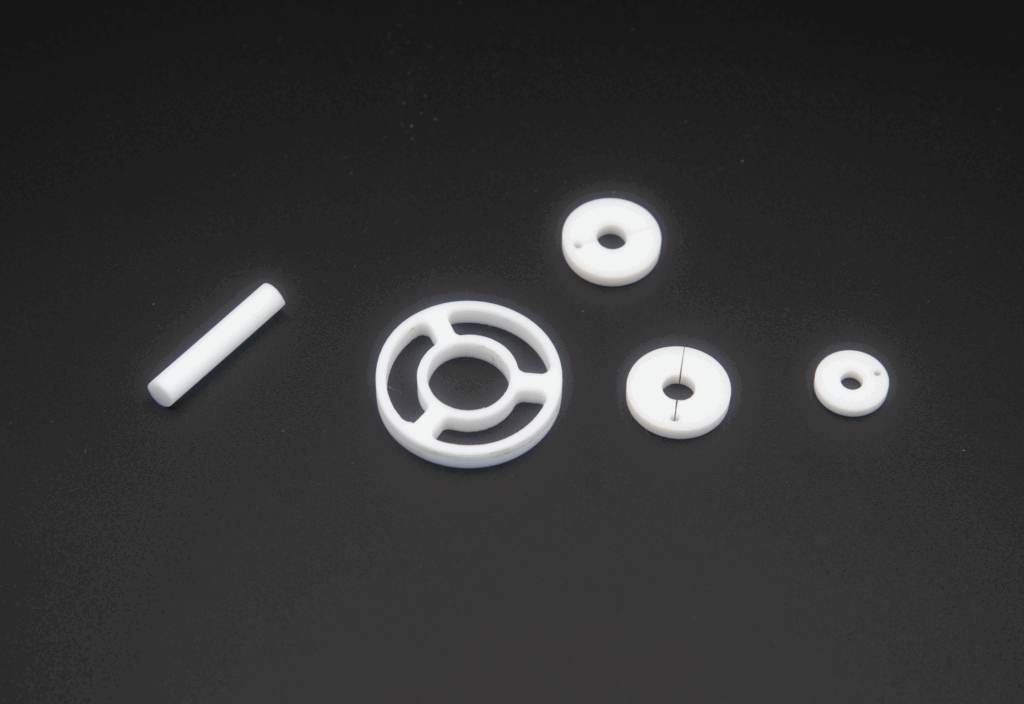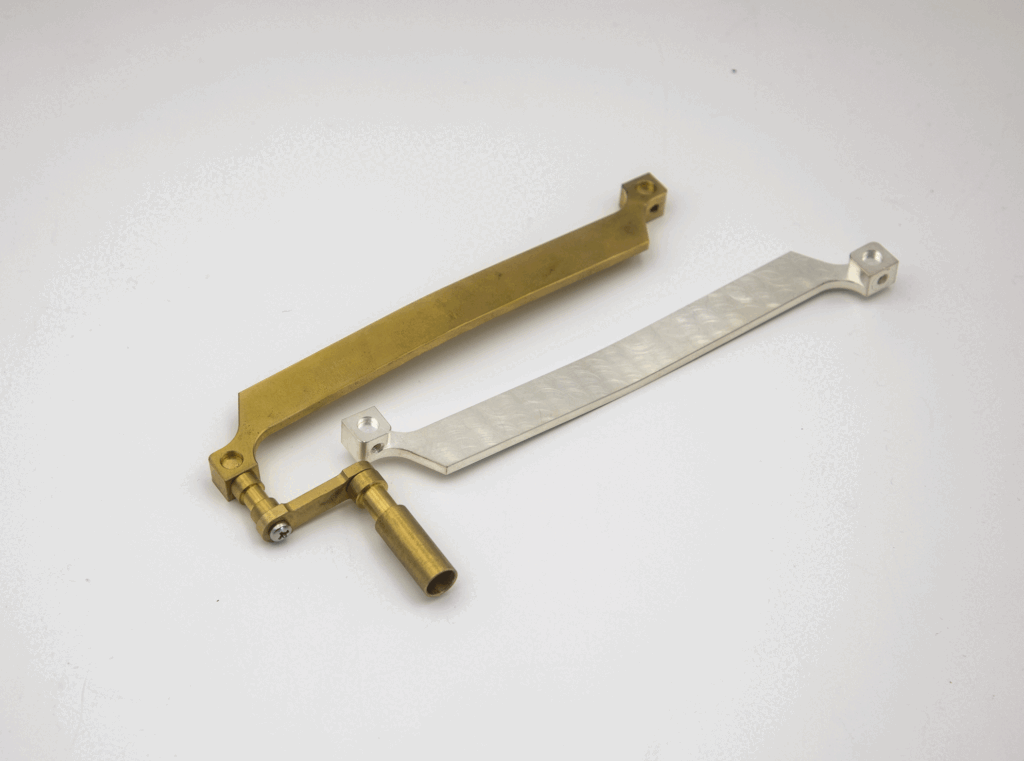We offer a variety of metal or PTFE connectors, fixings, and mounting components. Materials include aluminum, copper, high-temperature resistant polytetrafluoroethylene, etc. The application areas include communication electronic devices, passive components, as well as various equipment in aviation, medical, industrial, and civilian fields.The specific application areas of metal connections and installation fasteners include high conductivity connectors (copper based series); Military grade fasteners with high thread strength formed by cold forging; Lightweight installation components (aluminum based series); Medical specific buckle: 6061-T6 aviation aluminum treated with micro arc oxidation; Industrial quick installation bracket, anodized film can adapt to extreme environmental use.
Metal connectors

We can provide a variety of metal structural connectors, including copper, aluminum, or copper aluminum silver plated materials. Copper connectors, with a high conductivity of 5.8 × 10 ⁷ S/m, can reflect 90% of high-frequency electromagnetic waves in the shielding layer of power cables. Aluminum connectors form a self protective layer through a surface oxide film, which has a higher heat capacity than copper at the same volume, facilitating heat dissipation. Three types of materials form a gradient selection in conductivity: pure copper>silver plated aluminum>pure aluminum, meeting the current carrying requirements of different scenarios. In the field of electromagnetic shielding, the high conductivity of copper connectors can effectively reflect more than 90% of high-frequency electromagnetic waves, significantly reducing radiated noise by 15-20 dB. Although the shielding performance of pure aluminum connectors is slightly inferior to copper, the self-protection layer formed by their oxide film can still maintain stable shielding effect in humid environments, making them suitable for cost sensitive consumer electronics.
Parameter | Copper material | Aluminum material |
Conductivity | ≥ 58MS/m (T2 oxygen free copper) | ≥ 99.7% (three-layer composite board) |
Mechanical properties | tensile strength 200-400MPa | tensile strength ≥ 120MPa |
Density | 8.96g/cm ³ | 2.7g/cm ³ (6061 aluminum alloy) |
Thermal expansion coefficient | 16.8 × 10 ⁻⁶/℃ | 23.1 × 10 ⁻⁶/℃ |
PTFE connector
We can provide various specifications of polytetrafluoroethylene insulation components, including sealing, fixing, connecting, etc. Polytetrafluoroethylene materials have high chemical inertness and can withstand strong acids (such as hydrofluoric acid), strong bases, and organic solvents. The service life of corrosive media can reach 5-8 times that of metal joints. Secondly, it has good temperature adaptability, with a working temperature range of -196 ℃~260 ℃ and a short-term tolerance of 300 ℃ (such as rapid cooling conditions of semiconductor equipment), and maintains toughness at low temperatures.

Parameter | Typical Value | Description | |
Chemical stability | Resistant to strong acids, strong bases | Suitable for fixing components in chemical equipment or highly corrosive electronic environments | |
Wide temperature resistance range | Outer diameter of 10mm and a wall thickness of 1mm after flattening | | |
Channel design | Parallel channel/Serpentine channel | Serpentine channel improves heat dissipation uniformity by 20% | |
Contact thermal resistance | ≤ 0.01 K · cm ²/W | Epoxy resin adhesive filling reduces interface thermal resistance | |
Heat dissipation capability | Single board heat dissipation power: 200-800W | Depending on channel density | |
Temperature difference control | ≤ 3 ℃ | Deep buried pipe design | |
Weight | 1.5-3kg | Aluminum substrate+copper tube | |
Metal strip line

We can provide copper or aluminum materials in various specifications and sizes as substrates for PCB or other modules that require fixing or heat dissipation. Its main technical feature is its ultra-high thermal conductivity, such as copper having a thermal conductivity coefficient of 398 W/(m · K); Excellent high-frequency performance, suitable for high-frequency circuits (such as 5G base stations and RF equipment), reducing signal loss; Matching the coefficient of thermal expansion, such as copper’s CTE (17 ppm/℃) being closer to silicon chips (3 ppm/℃), reduces thermal stress and improves reliability. Widely used in high-power density devices such as AI server GPUs, laser drivers, high-frequency switching power supplies, base station RF modules, microwave circuits, etc.
Parameter | Copper material | Aluminum material |
Material model | T2 pure copper (C11000) | 6061-T6/5052-H34 |
Thermal conductivity | 380-400 W/(m · K) | 200-220 W/(m·K) |
Density | 8.96 g/cm³ | 2.7 g/cm³ |
Conductivity | ≥ 100% IACS | 35-40% IACS |
Thermal resistance(1.5mm) | 0.004 K/W | 0.008K/W |
Heat dissipation efficiency | 40-50% faster than aluminum |
|
Shielding efficiency | High frequency shielding effect is better (skin effect) | Additional coating (such as nickel) is required to enhance shielding |
Customized Consultation
wechat: yao13521681306
whatsApp: +8613521681306
Email: wuyanlitong_002@126.com
Add: Room 301,Unit 1,Liandong U valley science and technology park. No.21,shuiyuan west road, Miyun district,Beijing China.
